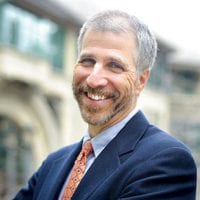Experts available: Economic impact of PG&E shutoffs
Featuring:
-
Catherine Wolfram
Cora Jane Flood Professor of Business Administration -
Severin Borenstein
Professor of the Graduate School | E.T. Grether Chair in Business Administration and Public Policy | Faculty Director, Energy Institute at Haas
Berkeley Haas Professors Catherine Wolfram and Severin Borenstein are available to share insights on the economic impact of the California power shutoffs. Both are economists with the Energy Institute at Haas.
View Article:
Haas energy experts weigh in on PG&E power shutoffs | Haas News | Berkeley Haas
Is it possible to gauge the economic impact of this week’s power shutoffs?
Catherine Wolfram: Yes and no. I’ve seen estimates that run all the way from $65M to $2.6B. That’s a pretty wide range, but even the high side is less than 1/1000th of the state’s annual GDP. So, while the outages are troubling, there shouldn’t be any concern that this will set us into a recession.
I’ve been pointing out, though, that these outages are very unusual because they’re a really long duration—not your typical two-minute to two-hour outage—but they’re not associated with a natural disaster. So, if we try to extrapolate from other multi-day outages, we’re likely conflating the effects of the thing that led to that outage, like Superstorm Sandy, say. With a hurricane, it’s likely that the economic losses reflect both the costs of the natural disaster and the costs of the lost power.
At the same time, there are likely going to be losses that are hard to measure. For instance, I got an email from a colleague who was worried that months of work on an experiment could be lost. Electricity is used for many, many different purposes in modern economies, so it’s really hard to put a precise number on the losses.
People were already angry with PG&E before this shutdown, and now they’re even angrier. Do you think the shutoffs were justified?
Catherine Wolfram: It’s really hard to know. The fires last year were devastating, so no one wants to repeat that experience. PG&E has pretty strong incentives right now to be extremely cautious.
Severin Borenstein: Effectively PG&E has a huge financial liability if their equipment starts a fire. On the other hand, the large financial and other costs of shutting off power are not borne by PG&E, but by customers. They do take a reputation hit, but don’t face the same sort of financial downside that would fall on them if their equipment started another fire.
In balance, were they effective?
Catherine Wolfram: This involves proving a negative, which is practically impossible. We’ll never really know whether the outages prevented a fire from starting.
As we begin to feel the effects of climate change, what is the path forward for the state’s aging grid?
Catherine Wolfram: I’d say that other utilities have been better than PG&E at investing in modern technologies that help prevent fires and give them more visibility into their electricity systems. For example, I’ve heard that San Diego Gas & Electric has technologies that de-energize lines when they sense that they’re falling. Hopefully, PG&E will start investing in things like this.
Contacts:
Prof. Catherine Wolfram: [email protected]
Prof. Severin Borenstein: [email protected]
Laura Counts, Berkeley Haas media relations: [email protected]
Kim Girard, Berkeley Haas media relations: [email protected]
-
Catherine Wolfram
Cora Jane Flood Professor of Business Administration
Leading expert on energy and environmental economics -
Severin Borenstein
Professor of the Graduate School | E.T. Grether Chair in Business Administration and Public Policy | Faculty Director, Energy Institute at Haas
Expert on the economics of renewable energy, economic policies for reducing greenhouse gases, and electricity pricing

